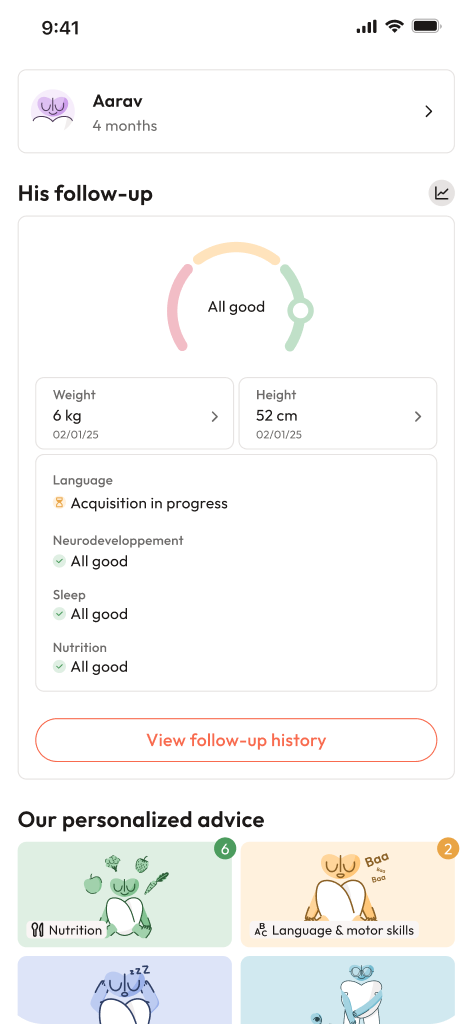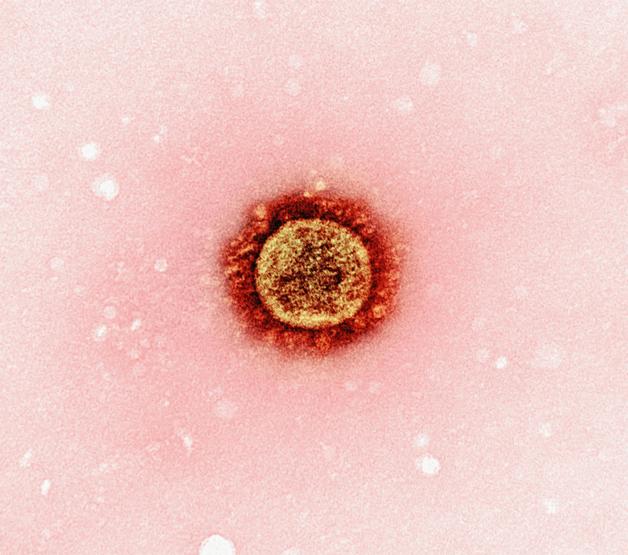There is a moment — sometimes exhilarating, sometimes nerve-wracking — when that first blurry image appears on the screen: the first trimester ultrasound. In those early weeks of pregnancy, every parent’s mind is a whirlpool of questions. “Is everything all right?” “How far along am I?” “Will I really see that tiny heart beating?” The first trimester ultrasound, usually performed between 6 weeks and 13 weeks and 6 days, is not just a test—it’s a window into the journey ahead. For many, this experience marks the bridge between anxious waiting and joyful anticipation. Here, you’ll discover why accurate dating is so significant, exactly what clinicians are looking for, the meaning behind those strange-sounding terms the doctor might mention, and how to make sense of the process, step by step. Along the way, you’ll find practical tips to prepare for your appointment and learn how these moments can support early pregnancy well-being.
Why is first trimester ultrasound important?
The first trimester ultrasound is not just an early photo opportunity. Instead, it’s a meticulous medical snapshot, designed to provide clarity about gestational age, the health of the embryo or fetus, and the number of babies growing. At this stage, measuring the crown–rump length (CRL) can reveal within a few days the true dating of your pregnancy—much more accurate than just relying on the last menstrual period. For those who have irregular cycles or are not quite sure of their dates, this exam becomes even more essential.
Ever wondered what it means if the doctor mentions “nuchal translucency (NT)”? Between 11 and 13+6 weeks, this measurement at the back of the baby’s neck gives valuable screening information for chromosomal conditions like Down syndrome (trisomy 21) when combined with certain blood tests. But that’s not all—ultrasound in this trimester can also confirm if there’s one baby or more, and offer reassurance if there are symptoms such as mild pain or slight bleeding.
- Reassurance: The magic of seeing cardiac activity, even as a tiny flicker, often brings a breath of relief.
- Planning ahead: Accurate dating sets the pathway for further tests, check-ups and helps anticipate the due date.
- Early detection: Identification of risk factors, like “vanishing twin” or even a pregnancy outside the uterus (ectopic), allows your doctor to tailor your care—sometimes with urgent follow-up.
When is the best time for first trimester ultrasound?
Early dating and viability (6 to 10 weeks)
If you’ve just had a positive home pregnancy test, and are not sure exactly when conception happened, an early first trimester ultrasound is preferred. At around 6–10 weeks, the crown–rump length (CRL) takes centre stage: a straight-line measurement from the top of the embryo’s head to its little bottom, performed with the baby in a relaxed, neutral position. This is also when the first heartbeat can become visible on screen—an electric moment for many.
Nuchal Translucency Screening (11–13+6 weeks)
At the “dating and NT” window, sonographers look for the NT measurement. Imagine a small, translucent pocket at the back of your baby’s neck—its thickness can signal increased chance for chromosomal conditions. In a single scan, so many answers unfold: is this an intrauterine pregnancy, how many embryos, what is their viability, and what’s the precise gestational age.
Reasons you might need an early scan
- Confirming pregnancy after a positive home test
- Light bleeding or cramps—understandably worrying, but not always a sign of a problem
- Previous ectopic pregnancy, recurrent loss, or IVF/ART pregnancy where extra reassurance is desired
- To check for twins, triplets, or more—sometimes a delightful surprise, sometimes a logistical shock!
- Clarifying uncertain findings on previous tests
What do clinicians document?
The first trimester ultrasound isn’t a simple peek. It’s a thorough process, where professionals record the presence and position of the gestational sac and yolk sac, size and location of the embryo or embryos, precise CRL and potential heartbeat, and, in cases of multiples, the type of placentae (chorionicity). The uterus and nearby organs are briefly checked for unusual findings, like cysts or early signs of an ectopic pregnancy. At 11–13+6 weeks, an NT measurement—requiring both skill and training—is part of the early aneuploidy (chromosomal risk) evaluation.
What scanning techniques are used?
Transvaginal Scan
Quite early in pregnancy, many will experience a transvaginal ultrasound. The word may create anxiety—but the truth? It’s typically quick, almost always painless, and provides exceptional early resolution. The operator places a thin probe, with a sterile cover and a dab of gel, gently inside the vaginal canal. You lie back, knees bent, and may feel slight pressure. For details like the early heart flicker or to see the yolk sac clearly, this approach is unmatched.
Transabdominal Scan
A bit further into the first trimester, the scan may shift to the belly. Here, a moderately full bladder elevates the uterus, acting like a natural “window” to enhance image clarity. Gel is applied to your stomach, and a handheld probe skims across the skin, transmitting those sound waves that bounce back as images. Later in the first trimester, transabdominal scans often suffice; very early structures may still appear clearer by transvaginal approach.
Safety and Imaging Modes
Safety, for most parents, is the one non-negotiable. Rest easy: first trimester ultrasound uses sound waves, not radiation. Two-dimensional imaging is standard, and “M-mode” is chosen for measuring fetal heart rate to limit energy exposure. Colour or pulsed Doppler imaging is reserved for special situations. Operators follow the ALARA principle—keeping both intensity and length of exposure “as low as reasonably achievable”—so parents can feel reassured.
Key findings: what do those numbers mean?
Crown–Rump Length (CRL)
This measurement is the trusted “workhorse” of early pregnancy dating. Performed in the mid-sagittal view, with the fetus in a neutral posture, the CRL offers accuracy within just a few days. A tiny change of even a millimetre in CRL shifts due dates by only one or two days.
Gestational Sac and Mean Sac Diameter (MSD)
In the earliest weeks, sometimes only the gestational sac is visible. When that’s the case, the mean sac diameter—an average of three measurements—gives a rough estimate of gestational age. The “double-decidual sign” signals a pregnancy in the uterus. If the sac seems too large and there’s no visible embryo, a repeat first trimester ultrasound within short intervals, plus “beta-hCG” blood tests, can provide clarity (and avoid unnecessary worry).
The Yolk Sac
What do you want to see? A round yolk sac with a nice, thin, bright rim inside the gestational sac is reassuring. If it appears enlarged, odd-shaped, or absent, the risk of pregnancy loss increases and closer follow-up is planned. Sometimes, just waiting a week makes all the difference.
Fetal Cardiac Activity
That first tiny flicker—sometimes visible by transvaginal scan at 5.5–6.5 weeks—signals early fetal heart activity. If the heartbeat isn’t seen just when expected, a repeat first trimester ultrasound within 7–14 days, and a few more “beta-hCG” tests, can give answers without rushing to judgment.
Nuchal Translucency (NT)
NT is a special, time-sensitive measurement—only between 11+0 and 13+6 weeks. It requires your baby to be perfectly placed, a neutral neck position, and experienced operators. If the NT measurement is above the usual range, the next step is often more tests, perhaps a consultation with a genetic specialist. Do not hesitate to clarify everything with your doctor if the word “increased NT” is mentioned.
Anatomy in the first trimester: what can and can’t be seen?
Think of the first trimester ultrasound as a wide-view lens—it’s not for the tiny details. Some larger conditions, like anencephaly (where the top of the skull and brain does not form) or a big cystic hygroma, sometimes get highlighted early. Most structural abnormalities, though, need the detailed views of the second-trimester anatomy scan (18–22 weeks). If something is unclear, targeted follow-up or a fetal medicine referral may follow.
Early screening and risk assessment
Early prenatal screening combines NT measurement and specific maternal blood tests—PAPP-A and free beta‑hCG are some examples. The result is a calculated risk for conditions like trisomy 21 (Down syndrome), trisomy 18 or 13. If your risk number sounds high, your care provider will walk you through next steps: maybe more tests, maybe a deeper discussion with a genetic counsellor. This is always your decision, guided by trustworthy advice.
NIPT / cfDNA
Non-Invasive Prenatal Testing (NIPT), also called cell-free DNA screening, is another option. Here, fragments of your baby’s DNA are analysed from the mother’s blood sample — a fascinating piece of modern science. NIPT often provides higher sensitivity and specificity for trisomies compared to combined screening, but it is still considered a “screening” test, not a diagnostic. Its availability and cost will depend on your healthcare facility, and personal choices matter.
Next steps after a high-risk screening
- Genetic counselling for a full explanation and support
- Diagnostic options (chorionic villus sampling or amniocentesis, depending on timing)
- High-resolution ultrasound, maybe repeating or supplementing previous scans
Common findings that need follow-up
- Anembryonic gestation (blighted ovum), missed miscarriage: If strict ultrasound criteria confirm a nonviable pregnancy, your doctor will discuss expectant management (waiting for things to proceed naturally), medication, or a minor procedure. No one path fits all; your wishes count.
- Threatened miscarriage: Light bleeding with an otherwise normal scan calls for gentle monitoring—no rush to conclusions.
- Ectopic pregnancy or unknown location: An empty uterus on first trimester ultrasound with a rising hCG, or a suspected mass near the ovary, means close follow-up. Quick, decisive care may be needed if rupture is suspected.
- Molar pregnancy: Rare, but a distinctive “snowstorm” pattern might appear on the scan, with very high hCG levels. Confirmed by pathology after evacuation, and longer-term monitoring will follow.
- Subchorionic hematoma: A small bleed between the placenta and uterus is surprisingly common. Mostly, these resolve; your doctor may suggest extra scans if it’s large.
- Multiples: Early identification of chorionicity (whether twins share a placenta or each has their own) is key, since care plans differ. If one twin is no longer seen (“vanishing twin”), the remaining pregnancy is watched as usual.
Dating accuracy, error margins and redating
A well-captured CRL is the most reliable way to define gestational age in the first trimester. Even small differences rarely change the due date by more than a day or two. If the initially estimated due date (EDD) based on your last period differs significantly from the measurement, the EDD may be changed, and you’ll see the method noted in your report.
Measurement uncertainty can arise from:
- Suboptimal angle or image quality
- High body mass index
- Uterine fibroids
- Operator’s skill level
- Multiple pregnancy
In case of doubt, a repeat scan or expert review will be arranged.
Limitations and handling uncertainty
Even highly trained sonographers and the best equipment face limits. If a measurement or image isn’t optimal, repeating the scan after a short interval is standard. A one-time scan is just a snapshot. Sometimes growth and development need another week to appear clearly. In every situation, you deserve a clear explanation: What was seen, what’s uncertain, and what the plan will be.
Safety, preparation and the experience itself
Is ultrasound safe?
Countless studies confirm: the first trimester ultrasound is safe. Sound waves, not radiation, are used. Practices such as reducing scan duration and using M‑mode rather than Doppler (for heart rate) are standard to keep exposure minimal. If you have any doubts, voice them—peace of mind is important.
How to prepare
- If a transabdominal scan is planned, drink water but don’t overfill your bladder—comfort matters.
- Transvaginal scans? You’ll typically be asked to empty your bladder first.
- Comfortable, easily adjustable clothing will make the exam smoother.
- Bring previous reports, any fertility clinic documents, a medication list, and a list of your questions (no query is too small).
What to expect
During the appointment, most parents will see the sonographer point out the gestational sac, yolk sac, embryo, and — hopefully! — heartbeat, if early enough. Sometimes, the doctor may explain that little can be seen if it’s just too early, and recommend another scan within a week. Your emotions may swing from joy to worry to curiosity within a single visit. All are valid. Feel free to request pauses, clarifications, and next steps before leaving.
Reporting, photos and follow-up pathways
The formal report will include:
- Gestational age, due date, and how dating was done (CRL or menstrual dates)
- CRL, fetal heart rate values
- NT if measured
- Number of embryos and their placental status (chorionicity), if twins or more
- A quick check of the uterus and ovaries
- Well-labeled, clear images for your records
NT measurements are performed only by certified professionals, with continuous quality checks to avoid discrepancies.
Follow-up could mean:
- Routine antenatal care (when everything looks as expected)
- Another scan within 7–14 days if clarity is needed
- Discussion and support for parents in case of a nonviable pregnancy
- Urgent follow-up if ectopic pregnancy is suspected
Practical planning: your first trimester ultrasound checklist
- Identity proof and any previous scan results
- Bladder preparation as per the appointment
- Easy-to-move clothing
- Personal question list: dating, heartbeat, twins, screening options
- Expect a 20–30 minute visit
Key Takeaways
- First trimester ultrasound reassures, informs, and guides the earliest steps of your pregnancy journey.
- Accurate CRL measurement is the reference for setting your due date and tracking early growth.
- Transvaginal scans provide stunning clarity very early, while transabdominal scans come to the fore later in the first trimester.
- NT screening, with or without blood tests, gives early risk assessment for chromosomal anomalies.
- Safety, comfort, and clear information are the hallmarks of a good scan experience—never hesitate to request explanation or emotional support.
- Medical teams are here for every parent, whatever the scenario or result.
- For guidance tailored to your journey and free child health screening tools, explore application Heloa.
Questions Parents Ask
How much will a first trimester ultrasound cost, and will my insurance cover it?
Costs can vary widely depending on where you get the scan, the type of scan required (routine dating, NT, or more detailed assessment), and your insurance. Some clinics include the routine first trimester ultrasound under health coverage while others may charge a fee. The best step is to contact the clinic’s administrative or billing team in advance: ask for the billing code, check if the scan is classified as “screening” or “diagnostic”, and verify insurance requirements. If cost is a major concern, you might explore if community or public health clinics offer more accessible options.
How and when will I get my NT or screening results, and what do they mean?
The timeline for results depends on your clinic’s process. Some provide preliminary information on the same day, while others share full reports within a few days—sometimes via a secure digital portal, other times through a follow-up call or appointment. For tests combining NT and blood markers, the final risk calculation is usually given after all are available. The “risk” figure (for example, 1 in 500) is not a diagnosis but an indicator pointing to next steps if needed—such as NIPT, genetic counselling, or further diagnostic tests. Never hesitate to ask for written explanations.
I’m anxious about screening and results—are there alternatives or support options?
Certainly. You can opt for NIPT (Non-Invasive Prenatal Testing), focus on dating and viability first, or postpone screening until you feel ready. A meeting with a genetic counsellor before testing can clarify benefits and limits. Bringing a trusted companion to appointments, asking for summaries, and allowing yourself time to digest results is always beneficial. If significant anxiety makes attending appointments difficult, let your clinic know—they can offer extra support. Medical teams routinely help families manage worries at every step.

Further reading :









